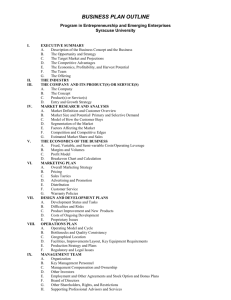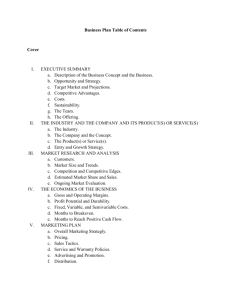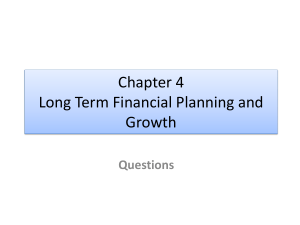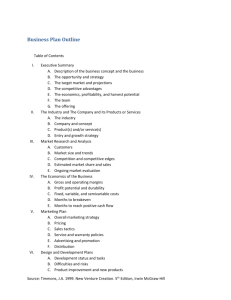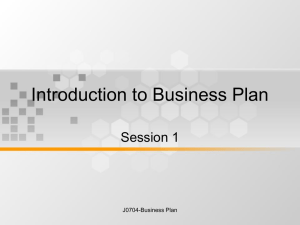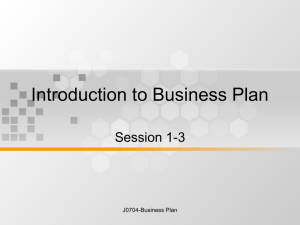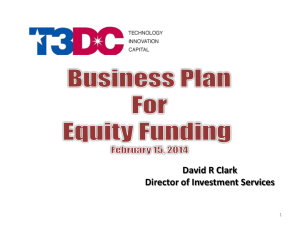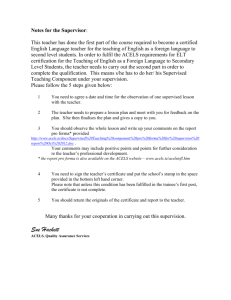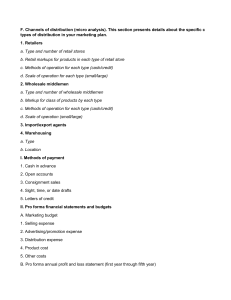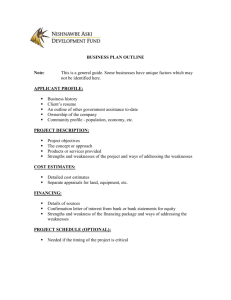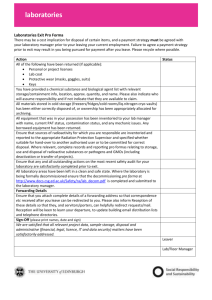pacific asian center for entrepreneurship
advertisement
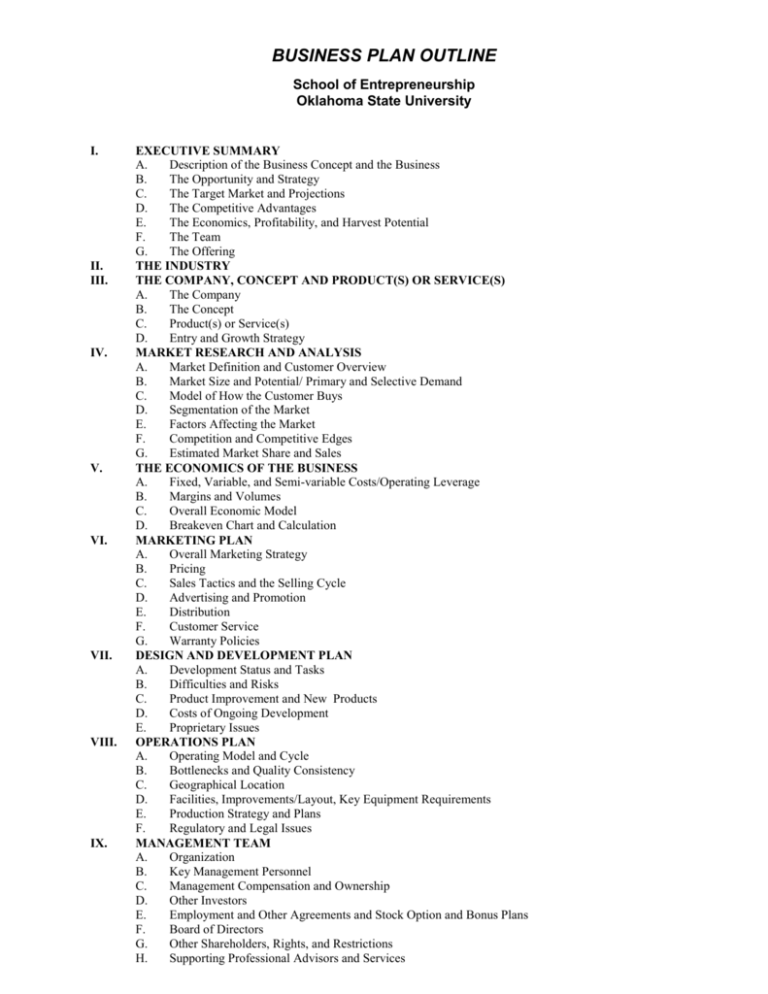
BUSINESS PLAN OUTLINE School of Entrepreneurship Oklahoma State University I. II. III. IV. V. VI. VII. VIII. IX. EXECUTIVE SUMMARY A. Description of the Business Concept and the Business B. The Opportunity and Strategy C. The Target Market and Projections D. The Competitive Advantages E. The Economics, Profitability, and Harvest Potential F. The Team G. The Offering THE INDUSTRY THE COMPANY, CONCEPT AND PRODUCT(S) OR SERVICE(S) A. The Company B. The Concept C. Product(s) or Service(s) D. Entry and Growth Strategy MARKET RESEARCH AND ANALYSIS A. Market Definition and Customer Overview B. Market Size and Potential/ Primary and Selective Demand C. Model of How the Customer Buys D. Segmentation of the Market E. Factors Affecting the Market F. Competition and Competitive Edges G. Estimated Market Share and Sales THE ECONOMICS OF THE BUSINESS A. Fixed, Variable, and Semi-variable Costs/Operating Leverage B. Margins and Volumes C. Overall Economic Model D. Breakeven Chart and Calculation MARKETING PLAN A. Overall Marketing Strategy B. Pricing C. Sales Tactics and the Selling Cycle D. Advertising and Promotion E. Distribution F. Customer Service G. Warranty Policies DESIGN AND DEVELOPMENT PLAN A. Development Status and Tasks B. Difficulties and Risks C. Product Improvement and New Products D. Costs of Ongoing Development E. Proprietary Issues OPERATIONS PLAN A. Operating Model and Cycle B. Bottlenecks and Quality Consistency C. Geographical Location D. Facilities, Improvements/Layout, Key Equipment Requirements E. Production Strategy and Plans F. Regulatory and Legal Issues MANAGEMENT TEAM A. Organization B. Key Management Personnel C. Management Compensation and Ownership D. Other Investors E. Employment and Other Agreements and Stock Option and Bonus Plans F. Board of Directors G. Other Shareholders, Rights, and Restrictions H. Supporting Professional Advisors and Services X. XI. XII. XIII. XIV. OVERALL SCHEDULE CRITICAL RISKS, PROBLEMS, AND ASSUMPTIONS THE FINANCIAL PLAN A. Actual Income Statements and Balance Sheets B. Pro Forma Income Statements C. Pro Forma Balance Sheets D. Pro Forma Cash Flow Analysis E. Months to Breakeven and to Positive Cashflow F. Cost Control G. Highlights PROPOSED COMPANY OFFERING A. Desired Financing B. Offering C. Capitalization D. Use of Funds E. Investor’s Return APPENDICES
